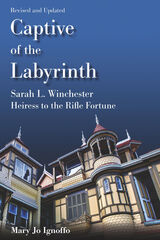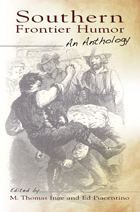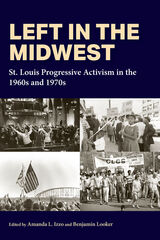6 have author last names that start with I have author last names that start with I

Since her death in 1922, Sarah Winchester has been perceived as a mysterious, haunted figure. After inheriting a vast fortune upon the death of her husband in 1881, Sarah purchased a simple farmhouse in San José, California. She began building additions to the house and continued construction on it for the next twenty years. A hostile press cast Sarah as the conscience of the Winchester Repeating Arms Company—a widow shouldering responsibility for the many deaths caused by the rifle that brought her riches. She was accused of being a ghost-obsessed spiritualist, and to this day it is largely believed that the extensive construction she executed on her San José house was done to appease the ghouls around her.
But was she really as guilt-ridden and superstitious as history remembers her? When Winchester’s home was purchased after her death, it was transformed into a tourist attraction. The bizarre, sprawling mansion and the enigmatic nature of Winchester’s life were exaggerated by the new owners to generate publicity for their business. But as the mansion has become more widely known, the person of Winchester has receded from reality, and she is only remembered for squandering her riches to ward off disturbed spirits.
Captive of the Labyrinth: Sarah L. Winchester, Heiress to the Rifle Fortune demystifies the life of this unique American. In the first full-length biography of Winchester, author and historian Mary Jo Ignoffo unearths the truth about this notorious eccentric, revealing that she was not a maddened spiritualist driven by remorse but an intelligent, articulate woman who sought to protect her private life amidst the chaos of her public existence. The author takes readers through Winchester’s several homes, explores her private life, and, by excerpting from personal correspondence, gives the heiress a voice for the first time since her death. Ignoffo’s research reveals that Winchester’s true financial priority was not dissipating her fortune on the mansion in San José but investing it for a philanthropic legacy.
For too long Sarah Winchester has existed as a ghost herself—a woman whose existence lies somewhere between the facts of her life and a set of sensationalized recollections of who she may have been. Captive of the Labyrinth finally puts to rest the myths about this remarkable woman, and, in the process, uncovers the legacy she intended to leave behind.

Author and historian Mary Jo Ignoffo’s definitive biography unearths the truth about this reclusive eccentric, revealing that she was not a maddened spiritualist driven by remorse but an intelligent, articulate woman who sought to protect her private life amidst the chaos of her public existence and the social mores of the time. The author takes readers through Winchester’s several homes, explores her private life, and, by excerpting from personal correspondence, one learns the widow’s true priority was not dissipating her fortune on the mansion in San José but endowing a hospital to eradicate a dread disease.
Sarah Winchester has been exploited for profit for over a century, but Captive of the Labyrinth finally puts to rest the myths about this American heiress, and, in the process, uncovers her true legacies.



Best known for his sharp wit and his portrayals of life along the banks of the Mississippi River, Mark Twain is indeed an American icon, and many scholars have examined how he and his work are perceived in the United States. In Mark Twain in Japan, however, Tsuyoshi Ishihara explores how Twain’s uniquely American work is viewed in a completely different culture.

Despite St. Louis’s mid-twentieth-century reputation as a conservative and sleepy midwestern metropolis, the city and its surrounding region have long played host to dynamic forms of social-movement organizing. This was especially the case during the 1960s and 1970s, when a new generation of local activists lent their energies to the ongoing struggles for Black freedom, lesbian and gay liberation, feminist social transformations, environmental protection, an end to the Vietnam War, and more. This volume, the first of its kind, offers fifteen scholarly contributions that together bring into focus the exceptional range of progressive activist projects that took shape in a single midwestern city during these tumultuous decades.
In contrast to scholarship that seeks to interpret the era’s social-movement initiatives in a primarily national context, the works presented in this expansive collection emphasize the importance of locality, neighborhood, community institutions, and rooted social networks. Documenting wrenching forces of metropolitan change as well as grassroots resilience, Left in the Midwest shows us how place powerfully shaped agendas, worldviews, and opportunities for the disparate groups that dedicated themselves to progressive visions for their city. By revising our sense of the region’s past, this volume also expands our sense of the possibilities that the future may hold for activist movements seeking change in St. Louis and beyond.
READERS
Browse our collection.
PUBLISHERS
See BiblioVault's publisher services.
STUDENT SERVICES
Files for college accessibility offices.
UChicago Accessibility Resources
home | accessibility | search | about | contact us
BiblioVault ® 2001 - 2024
The University of Chicago Press









